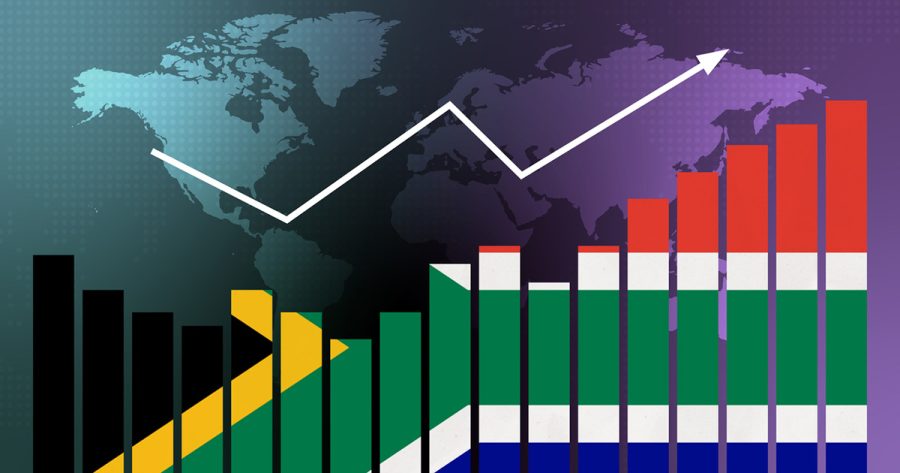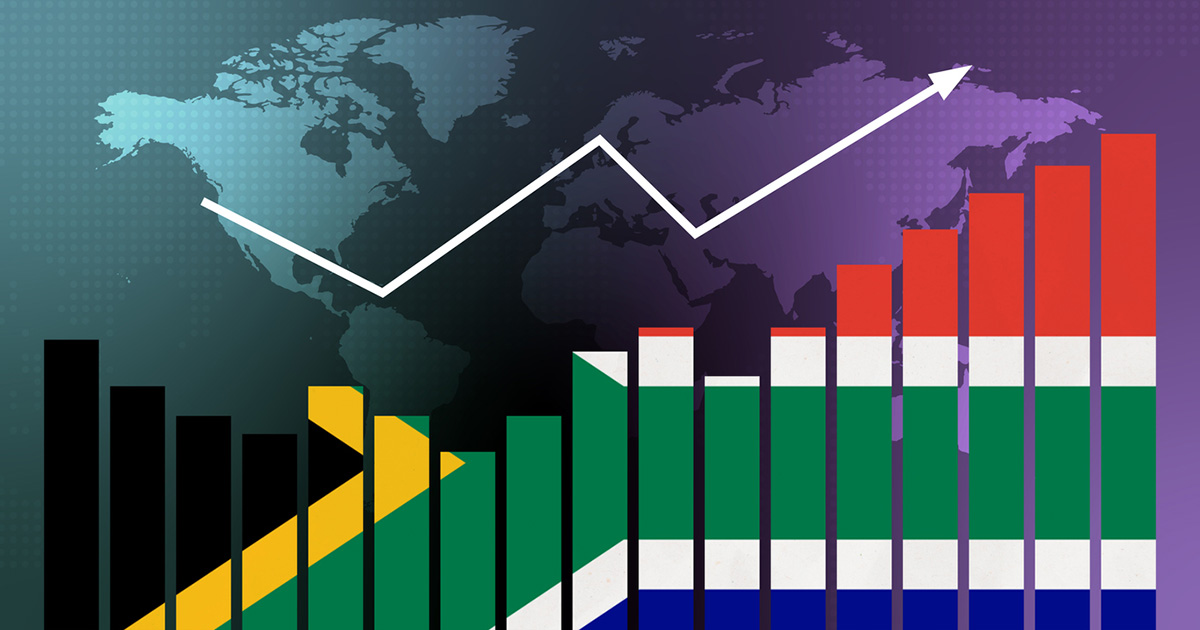
Sterling rises but sticky inflation remains in focus
As the Sterling rises against a weaker dollar on Tuesday, stickier than expected British inflation remains in focus ahead of a quiet week for the country’s data calendar. Reuters: As the Sterling rises against a weaker dollar on Tuesday, stickier than expected British inflation remains in focus ahead of a quiet week for the country’s […]

As the Sterling rises against a weaker dollar on Tuesday, stickier than expected British inflation remains in focus ahead of a quiet week for the country’s data calendar.
Reuters: As the Sterling rises against a weaker dollar on Tuesday, stickier than expected British inflation remains in focus ahead of a quiet week for the country’s data calendar.
BRITISH POUND STERLING RISES
Investors were largely focused on moves in the U.S. dollar as a deal to raise the U.S. debt ceiling faces its first test in Congress, and on the yen, which strengthened after an impromptu meeting of Japan’s finance ministry and central bank. “It’s sterling caught in the crossfire of the moves in the dollar and the yen and generally it’s quite weak this week” said Adam Cole, head of FX strategy at RBC Capital Markets. At 1013 GMT, the pound was 0.5% higher against the dollar at $1.2416, and 0.35% up against the euro at 86.39 pence.
Last week data showed British inflation fell in April but by less than expected and it remains above the rate of price growth in the United States and most of Europe, increasing pressure on the Bank of England to keep hiking interest rates. Stickier than expected inflation is still on the radar this week, with a survey on Tuesday showing British shop price inflation picking up this month to reach its highest rate since industry records began in 2005, although growth in food prices cooled slightly. The pound has come off an 11-month high of $1.26790 touched on May 10, but remains close to that level.
ALSO READ: BREAKING: Rand hits record low amid SA-Russia concerns
The BoE will convene on June 22, with traders betting on an 84% chance of a 25-basis-point hike from the BoE. The central bank has raised interest rates 11 times since December 2021 in a bid to bring down soaring inflation. “Most important is the next CPI release, that is the primary driver and secondary to that the labour markets data and the earnings data in particular, as a longer leading indicator of where inflation is going,” said Cole, whose team remains negative on the pound’s outlook. Britain’s next CPI print is due on June 21, while labour market data is due on June 13.
US DOLLAR
Reuters: The dollar languished below the psychological 140 yen level on Wednesday after getting knocked back from a six-month high after Japanese officials met on Tuesday to discuss their currency. The Australian dollar rode a rollercoaster after it jumped on heated local inflation data only to be dragged lower moments later by more signs of a slowdown in China, a major trading partner. The Chinese yuan slumped to a six-month low in offshore trading. The Aussie was last down 0.15% at $0.6507, heading back toward last week’s 6 1/2-month low of $0.6490. It sank as much as 0.38% at its lowest point, immediately after climbing as much as 0.33%. “We have to remember that the Aussie is a pro-growth currency, strongly linked to the outlook for commodities, and we’ve seen commodities under pressure of late,” said Rodrigo Catril, senior foreign-exchange strategist at National Australia Bank. “The lack of positive news coming from economic activity in China is exacerbating that view, and proving to be the dominant one,” trumping increased likelihood for further Reserve Bank of Australia tightening “sooner rather than later” following a hotter-than-expected consumer price reading, he said.
ALSO READ: Zimbabwe turns to informal vendors for shopping as inflation soars
The New Zealand dollar sank as much as 0.5% to a 6 1/2-month trough at $0.60125. Against the Chinese yuan, the U.S. dollar climbed as much as 0.38% to 7.1171 for the first time since Nov. 30. Meanwhile, the greenback was little changed at 139.82 yen following a 0.46% slide on Tuesday, when Japan’s top currency diplomat said following a meeting of the country’s finance ministry, central bank and financial watchdog that officials “will closely watch currency market moves and respond appropriately as needed.” The dollar had risen as high as 140.93 earlier that day for the first time since Nov. 23. “The meeting was preemptive,” said Bart Wakabayashi, general manager at State Street in Tokyo.
“I think the real line in the sand is 150,” added Wakabayashi, who expects diverging monetary policy outlooks in Japan and the United States to continue to push the currency pair higher. “If we get above 145, we’re going to see pretty much every Japanese official on the wires trying to talk it down, and if they don’t like what they see, they’re going to act,” he said, referring to the risk of currency intervention. Elsewhere, the euro slipped 0.22% to $1.0711, giving back part of Tuesday’s 0.28% advance. Sterling retreated 0.14% to $1.2395, following a 0.44% gain the previous day.
ALSO READ: Newspaper front pages from around the world, 31 May 2023
SOUTH AFRICAN RAND
Reuters: The South African rand hit a record low on Tuesday on the back of a strengthening dollar and souring local investor sentiment that has seen massive capital outflows from the country. At 1518 GMT, the rand traded at 19.690 against the dollar, about 0.09% weaker than its previous close. It hit an new low in early trade on Tuesday, touching 19.860 to the dollar. The local currency has lost over 7% against the greenback since the start of the month and more than 15% since the beginning of the year. Africa’s most industrialised economy faces its worst rolling blackouts, which are further exacerbating persistent high inflation and pushing the central bank of continue to hike interest rates.
The dollar slightly weakened on Tuesday and was down 0.144% to 104.1 against a basket of global currencies. The index nonetheless remains close to a two-and-half-month high. The dollar-rand exchange rate “is very much at the mercy of the U.S. at present and will continue to do so until we get more clarity”, DailyFX analyst Warren Venketas said. Greg Davies, head of wealth at asset manager Cratos Capital, said South Africa was now a less desirable investment destination for international investors due to the local power crisis. Shares on the Johannesburg Stock Exchange closed weaker, with both the blue-chip Top-40 index closing 0.73% weaker and broader all-share index ending the day 0.88% down.
ALSO READ: Top 3 richest South Africans in the world – 31 May 2023
The power crisis is also taking a toll on the earnings of some of the top companies with Tiger Brands TBSJ.J, country’s biggest food producer, warning that it might not be able to meet its profits for the year due to the blackouts. “We’ve had poor results coming from Tiger Brands and Pepkor; two companies closely followed by foreigners,” said Casparus Treurnicht, analyst and portfolio manager at Gryphon Asset Management. Tiger Brands shares crashed by more than 16%, while major retailer Pepkor lost over a tenth of its market value. South Africa’s benchmark 2030 government bond was weaker, the yield closing up 19.5 basis points at 11.315%, its highest level since the COVID-19global marketrout in early April 2020.
GLOBAL MARKETS
Reuters: China’s yuan hit a six-month low and Asia’s stockmarkets staggered toward a second month of losses on Wednesday as weak factory activity figures offered the latest evidence that recovery in the world’s second-biggest economy is faltering. MSCI’s broadest index of Asia-Pacific shares outside Japan fell 1.2% and is down 2.5% in a month where hopes a resurgent China would drive global growth have run dry. Hong Kong stocks are down 20% from a peak in January. Data showed China’s manufacturing activity PMI fell to 48.2 for May, contracting even faster than expected. Services growth slackened to its slowest pace in four months. The yuan dropped 0.3% to 7.1090 per dollar after that – a level not seen since the country was under tight public health restrictions in November last year. The currency is down more than 2.6% on the month as indicators from output to industrial profits, retail sales and loan growth have missed forecasts. “There were concerns China’s economic comeback could be so strong that it would complicate advanced economy central banks’ fight against inflation,” said Carol Kong, economist and currency strategist at the Commonwealth Bank of Australia. “Fast forward to today, those expectations look misplaced.”
ALSO READ: Top 10 richest people in the world – 31 May 2023
The disappointment has filtered through to other China-sensitive assets. The Australian dollar hit a near seven-month low of $0.6489 and is down four months in a row. Aussie stocks are eying their worst day since March and a monthly drop of 2.7%. A tourism-led rally for Thailand’s baht and stock index has also failed to arrive. In China, blue chip stocks dropped 1% to 2023 lows and government bonds rallied . Hong Kong’s Hang Seng fell 2.5% to put the index more than 20% beneath a January peak touched when hopes of a reopening rally were high. Even stocks in Asia’s brightest market, Japan, took a step down on Wednesday. The benchmark Nikkei fell 1.6%, though that caps a 6.8% monthly gain that’s driven the index above 30,000 to its highest levels in more than 30 years.
Elsewhere inflation and the U.S. debt ceiling are in focus. German inflation figures come later on Wednesday and are expected to show a fairly sharp moderation. Signals from Asia were less hopeful. Data from Australia showed an unexpected rise in consumer prices and came with a warning from the central bank chief of pain ahead – prompting traders to nudge up the chances of another rate hike there next week. “It may be difficult to deny the possibility that we are already in a new normal,” Bank of Japan Governor Kazuo Ueda said on Wednesday, where interest rates and inflation do not return to the low levels of the past. A deal to suspend the U.S. debt limit and avoid a default cleared a House of Representatives committee overnight and is set for debate and passage on Wednesday, which would send it to the Senate where debate could stretch to the weekend.
ALSO READ: Ghana and the IMF sign a deal, a huge economic relief
Treasuries rallied after the initial deal was struck, on the expectation a U.S. default would be averted, but the market remains skittish as once authorised to borrow the Treasury is likely to issue lots of debt to replenish its coffers. Benchmark 10-year yields dropped 12.4 basis points overnight and fell another 3 bps on Wednesday in Asian trade to 3.6675%. Yields fall when bond prices rise. Two-year yields were down 3.5 bps to 4.4379% on Wednesday. The dollar has been on the rise in anticipation that yields eventually go up again and as U.S. data comes in stronger than in Europe. This month the euro is down nearly 3% on the greenback to $1.0686 and the yen is down about 2.3% to 139.51 per dollar. In commodity markets, growth jitters have benchmark Brent crude futures down 7.8% this month to $73.35 a barrel. Gold is off 2-1/2 year highs at $1,954 an ounce.
